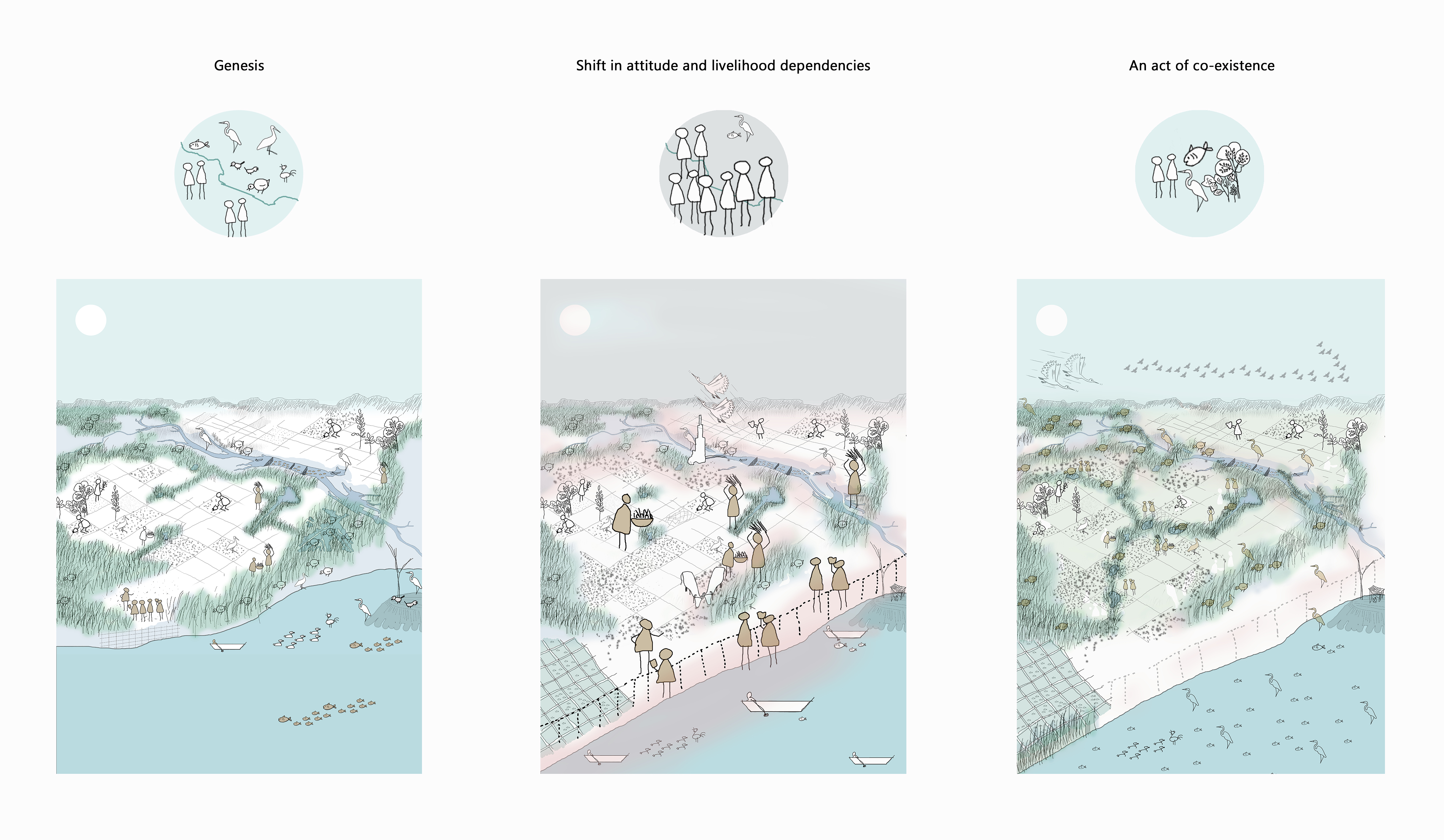
Shared Habitats
Landscape Design Studio 2 - (Tracing Lines)
CEPT University
Nalsarovar, a RAMSAR wetland is a significant stopover point in the Central Asian flyway. Equivalent to its biodiversity is the indigenous cultural systems of Padhar, a primitive tribe, whose ways of life are reciprocal to the natural systems and cycles of this lacustrine landscape. In the mythical stories of this land, is a motif of the mother (water) who nurtured her offspring, the reeds, fishes, birds and the tribes by sharing her possessions. The hidden notion of sibling-hood among the inhabitants of the wetland conserved the natural and cultural systems together for ages. The erratic nature of the monsoon, with newer urban aspirations, thoughtless developments has brought in a shift in the way the landscape and its inhabitants co-existed. Though attuned to the periodic cycles of nature, through the sporadic cycles of prolonged drought and intense floods, only the fittest survived, the rest, fled or perished. The project primarily tries to define a new dependency cycle through the introduction of micro-cultural habitats as networks of smaller niches, that become repositories and catalysts, capable of kindling the cycle of regeneration when capacious units of ecosystems get altered beyond repair. These units consist of the reeds, fishes, people and birds. A defunct farm pond is selected as a demonstration unit of micro-cultural habitat, it uses a reed integrated farm pond technique, that assimilates traditional skills and ecological knowledge of the native tribes to generate livelihoods and links it with habitat conservation measures, reciting the idea of shared belongings.
